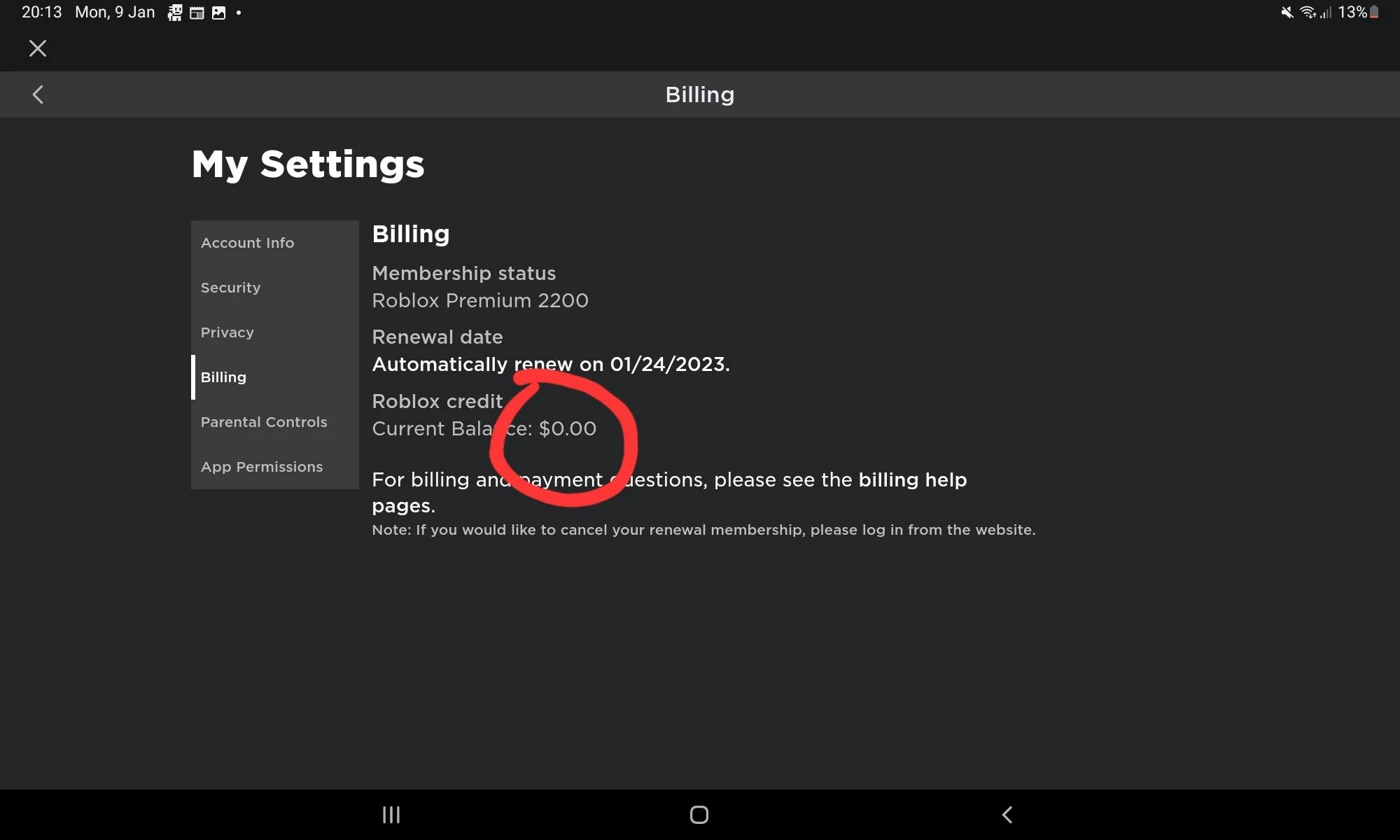

Finance
How Do I Get A Repo Off My Credit
Published: January 8, 2024
Looking to improve your financial situation? Find out how to remove a repo from your credit and improve your overall credit score.
(Many of the links in this article redirect to a specific reviewed product. Your purchase of these products through affiliate links helps to generate commission for LiveWell, at no extra cost. Learn more)
Table of Contents
Introduction
Having a repossession on your credit report can have a significant impact on your financial well-being. It can make it difficult to secure loans, obtain favorable interest rates, or even rent an apartment. But do not worry, there are steps you can take to remove a repo from your credit and improve your creditworthiness.
Before we dive into the steps to remove a repo from your credit, it’s important to understand what a repossession is and how it affects your credit. A repo, short for repossession, occurs when you default on a loan and the lender reclaims the asset – usually a vehicle – that you used as collateral. This action is typically taken after multiple missed payments or a failure to meet the obligations outlined in the loan agreement.
When a repo is reported to the credit bureaus, it can have a significant negative impact on your credit score. Your credit score is a numerical representation of your creditworthiness, and a repo can cause your score to drop by a substantial amount. This can make it difficult to qualify for new credit or secure favorable terms on loans.
Now that we understand the importance of removing a repo from your credit, let’s explore the steps you can take to tackle this issue head-on.
Understanding Credit Reports
Before we dive into the steps to remove a repo from your credit, it is crucial to have a solid understanding of credit reports. A credit report is a detailed record of your borrowing and payment history. It provides information about your credit accounts, payment history, outstanding debts, and any negative incidents such as repossession or bankruptcy.
Credit reports are compiled by credit bureaus, which are independent agencies that collect and maintain financial information about individuals. The three major credit bureaus in the United States are Equifax, Experian, and TransUnion. These bureaus gather data from various sources, including lenders and financial institutions, and create a comprehensive report that reflects your creditworthiness.
Your credit report plays a vital role in determining your credit score, which is a numerical representation of your creditworthiness. Lenders use this score to assess your risk as a borrower when you apply for credit, such as a loan or a credit card. A higher credit score indicates a lower risk, making you more likely to qualify for loans with favorable terms and lower interest rates.
When it comes to repossession, the details of the event will be recorded on your credit report. This includes the date of the repo, the lender involved, and the amount owed at the time of repossession. It is important to note that this negative information will remain on your credit report for a certain period, generally seven years from the date of the initial delinquency.
Being aware of the information contained within your credit report is essential, as it allows you to monitor your creditworthiness and detect any inaccuracies or discrepancies. By regularly reviewing your credit report, you can ensure that the information being reported is accurate and take steps to correct any errors that may negatively impact your credit score.
Now that we have a better understanding of credit reports and how they relate to repossession, let’s move on to the steps you can take to remove a repo from your credit and improve your financial standing.
What is a Repossession?
A repossession occurs when a borrower fails to make timely payments on a loan secured by an asset, such as a car or a home. When this happens, the lender has the right to reclaim the asset to recoup their losses. Repossessions often happen in cases of auto loans, where the vehicle serves as collateral.
The repossession process typically involves the lender hiring a repossession agency to locate and take possession of the asset. The agency is authorized to take the asset without the borrower’s consent, as long as it does not breach the peace. They may use techniques such as towing the vehicle or entering the borrower’s property to repossess it.
It is important to understand that repossession is considered a last resort for lenders. They generally prefer to work with borrowers to find a solution before resorting to repossession. This may involve negotiating a repayment plan, granting a forbearance period, or modifying the terms of the loan.
Once a repossession occurs, the lender will report the event to the credit bureaus, and it will be reflected on your credit report. This negative mark can significantly impact your credit score and make it challenging to obtain credit in the future.
It’s important to note that repossession laws vary by jurisdiction, so the specific rules and procedures may differ depending on where you live. If you find yourself facing a repossession situation, it is advisable to consult with a legal professional who can guide you through the process and help protect your rights.
Now that we know what a repossession is and how it occurs, let’s explore the impact it can have on your credit score and financial standing.
Impact of Repo on Credit
A repossession can have a significant negative impact on your credit score and overall creditworthiness. When a lender repossesses an asset, such as a vehicle, due to non-payment, it indicates to other lenders that you were unable to fulfill your financial obligations.
One of the most significant consequences of a repo is the impact on your credit score. Your credit score is a three-digit number that represents your creditworthiness and is used by lenders to assess the risk of lending to you. A repo can cause your credit score to drop by a substantial amount, making it more difficult to secure new credit or loans in the future.
In addition to lowering your credit score, a repossession will also appear on your credit report. This negative mark will remain on your credit report for a significant period, generally seven years from the date of the initial delinquency. During this time, the repo can serve as a red flag to potential lenders and may result in them being hesitant to extend credit to you.
The impact of a repossession on your credit goes beyond just your credit score and report. It can also affect other aspects of your financial life. For example, having a repo on your credit report might cause you to pay higher interest rates on loans or credit cards that you do qualify for. It could also result in difficulty securing housing or may require you to pay a higher security deposit.
It’s important to note that the impact of a repo on your credit can vary depending on your overall credit history. If you have an otherwise positive credit history with a few blemishes, the impact might be less severe compared to someone with a history of missed payments and delinquencies. However, it’s still crucial to address the repo and take steps to remove it from your credit report to improve your credit standing.
Now that we understand the negative impact a repo can have on your credit, let’s explore the steps you can take to remove a repo from your credit report and improve your financial situation.
Steps to Remove a Repo from Your Credit
If you have a repo on your credit report, it’s important to take proactive steps to remove it and improve your creditworthiness. While it may not be an easy or quick process, there are several steps you can take to address the repo and potentially have it removed from your credit report.
1. Review Your Credit Report: Start by obtaining a copy of your credit report from each of the three major credit bureaus. Carefully review the report to ensure the information regarding the repo is accurate and up to date.
2. Dispute Inaccurate Repo Information: If you find any inaccuracies or inconsistencies with the repo information on your credit report, you have the right to dispute it. Contact the credit bureaus in writing and provide supporting documents to back up your claim. They will investigate the dispute and make corrections if necessary.
3. Negotiate with the Lender: Reach out to the lender who repossessed your asset and try to negotiate a solution. Explain your financial situation and explore options such as a repayment plan or settlement offer. Keep in mind that the lender is not obligated to remove the repo from your credit report, but they may be willing to work with you to find a resolution.
4. Seek Professional Help: If you’re struggling to navigate the process on your own, consider reaching out to a reputable credit repair agency or a credit attorney. They can provide guidance, negotiate on your behalf, and help you understand your rights throughout the process.
5. Rebuilding Your Credit after Repo: While working on removing the repo from your credit report, it’s essential to focus on rebuilding your credit. Make timely payments on all your credit accounts, keep credit card balances low, and avoid applying for new credit unnecessarily. Over time, these positive credit habits will help improve your creditworthiness.
Removing a repo from your credit report may require persistence and patience. It’s important to stay proactive, stay on top of your credit, and continue to work towards improving your financial situation.
Remember, each individual’s credit situation is unique, and the steps to remove a repo from your credit may vary. It’s always recommended to consult with a financial professional or credit counselor for personalized advice based on your specific circumstances.
Review Your Credit Report
One of the essential steps in the process of removing a repo from your credit is to review your credit report thoroughly. Your credit report contains detailed information about your credit history, including any repossession incidents. By reviewing your credit report, you can ensure that the repo information is accurate and take the necessary steps to address any discrepancies. Here’s what you should do:
- Obtain Copies of Your Credit Report: Start by obtaining your credit reports from all three major credit bureaus – Equifax, Experian, and TransUnion. You are entitled to one free credit report from each bureau every year, which you can request through AnnualCreditReport.com.
- Carefully Review Your Reports: Go through each report carefully and look for any information related to the repo. Pay attention to the creditor name, the amount of the debt, the date of the repo, and the status of the account.
- Check for Accuracy: Ensure that all the information regarding the repo is accurate. Look for any errors, such as incorrect dates, amounts, or creditor names. It’s crucial to identify any inaccuracies, as they can negatively impact your credit score and ability to remove the repo.
- Report Any Discrepancies: If you find any inaccuracies or discrepancies related to the repo on your credit report, you have the right to dispute them. File a dispute with the credit bureau(s) reporting the incorrect information. Provide supporting documents, such as payment records or documentation of any agreements with the lender, to support your claim.
- Follow Up on the Dispute: Once you have filed a dispute, the credit bureau is required to investigate the matter within a reasonable timeframe. They will contact the creditor or lender and ask them to verify the accuracy of the repo information. If the creditor cannot provide sufficient evidence to validate the repo, the credit bureau must remove it from your credit report.
Reviewing your credit report regularly is crucial not only for addressing repossession incidents but also for ensuring the overall accuracy of your credit history. By staying vigilant and proactive in reviewing your credit report, you can take the necessary steps to remove inaccuracies, improve your credit, and enhance your overall financial health.
Dispute Inaccurate Repo Information
If you have identified any inaccuracies or discrepancies related to a repo on your credit report, it’s essential to take immediate action and dispute the incorrect information. By disputing the repo, you can potentially have it removed from your credit report and improve your credit standing. Here are the steps to dispute inaccurate repo information:
- Gather Documentation: Collect any documentation related to the repo and the loan agreement. This may include payment records, correspondence with the lender, or any agreements or settlements reached. These documents will serve as evidence to support your dispute.
- Submit a Dispute Letter: Write a formal dispute letter to the credit bureau(s) reporting the inaccurate repo information. In your letter, clearly explain the error, provide any relevant documentation, and request that the repossession be removed from your credit report. Be concise, specific, and professional in your communication.
- Include Supporting Evidence: Make copies of any supporting documents and include them with your dispute letter. These documents will strengthen your case and provide proof of any agreements, payments made, or other discrepancies.
- Send the Dispute Letter: Mail your dispute letter and the supporting documents to the appropriate credit bureau(s) using certified mail with a return receipt. This will provide proof that you sent the dispute and allow you to track its delivery.
- Follow Up on the Dispute: After sending your dispute, it’s important to follow up with the credit bureau(s) to ensure that they received your letter and are investigating the matter. You can typically check the status of your dispute online or by contacting the credit bureau directly.
- Monitor the Results: The credit bureau is required to investigate your dispute within a specific timeframe, typically 30 to 45 days. They will contact the lender and ask for verification of the repo information. If the lender fails to provide sufficient evidence or does not respond within the allotted time, the credit bureau must remove the repossession from your credit report.
Disputing inaccurate repo information may require persistence and patience, but it is a crucial step in the process of removing a repo from your credit report. By providing clear and compelling evidence, you increase the chances of having the repo removed and improving your credit standing.
If the credit bureau(s) does not correct the error or fails to investigate your dispute properly, you can file a complaint with the Consumer Financial Protection Bureau (CFPB) and seek assistance from a consumer law attorney. These resources can provide additional guidance and support in resolving the dispute.
Negotiate with the Lender
If you have a repo on your credit report, one effective step you can take to potentially remove it is to negotiate directly with the lender who repossessed your asset. While the lender is not obligated to remove the repo from your credit report, they may be willing to work with you to find a mutually beneficial solution. Here are some strategies to help you negotiate with the lender:
- Assess Your Financial Situation: Before engaging in negotiations, it’s crucial to evaluate your current financial situation. Determine how much you can afford to pay towards the debt, taking into account your income, expenses, and other financial obligations.
- Contact the Lender: Reach out to the lender who repossessed your asset and express your willingness to resolve the debt. Explain your financial hardship, any extenuating circumstances, and your desire to improve your credit standing. Be honest and concise in your communication.
- Propose a Repayment Plan: Based on your financial assessment, propose a realistic and reasonable repayment plan to the lender. Offer to make payments over a specific period of time until the debt is fully satisfied. Emphasize your commitment to meeting your financial obligations and ask for their assistance and understanding.
- Consider a Settlement Offer: If you are unable to afford the full amount owed, you may consider proposing a settlement offer to the lender. Offer a lump sum payment that is less than the total debt in exchange for them removing the repo from your credit report. This option may be more appealing to the lender as it allows them to recover a portion of the debt without going through lengthy collection efforts.
- Get Agreements in Writing: Whenever discussing payment arrangements or settlement offers, make sure to obtain written agreements from the lender. This will protect both parties and provide clarity on the terms of the agreement, including any adjustments to the repo reporting on your credit report.
- Follow Through on Negotiated Terms: Once an agreement has been reached, it is crucial to honor your end of the bargain. Make payments as agreed or provide the settlement amount promptly. By fulfilling your obligations, you demonstrate your commitment to improving your financial situation.
While negotiating with the lender does not guarantee that they will remove the repo from your credit report, it provides an opportunity to find a feasible solution. Be prepared for the possibility that the lender may not be willing to remove the repo, but remain persistent in your efforts to address the situation.
If negotiations with the lender prove challenging or are unsuccessful, you may consider seeking assistance from a consumer law attorney or a reputable credit counseling agency. These professionals can provide guidance and support throughout the negotiation process.
Seek Professional Help
If you are facing difficulties in removing a repo from your credit or negotiating with the lender, it may be beneficial to seek professional help. Credit repair agencies and credit attorneys specialize in helping individuals navigate complex credit situations and can provide valuable assistance in dealing with repos on your credit report. Here’s how professional help can benefit you:
- Credit Repair Agencies: Credit repair agencies are companies that specialize in improving credit scores and repairing credit reports. They have experience in handling repossession cases and can guide you through the process of removing a repo from your credit report. They can assist in disputing inaccurate information, providing expert advice, and negotiating with lenders on your behalf.
- Credit Attorneys: Credit attorneys are legal professionals who specialize in consumer credit law. They can provide legal advice, review your rights and options, and represent you in legal matters related to repossession and credit reporting issues. A credit attorney can assess your case, ensure that your rights are protected, and take appropriate legal action if necessary.
- Credit Counseling Agencies: If the repossession has caused broader financial hardships, credit counseling agencies can provide guidance and support. They can help you create a budget, manage your debt, and develop a plan to improve your overall financial situation. They can also negotiate with creditors to establish repayment plans or settle outstanding debts.
When seeking professional help, it is essential to choose reputable and trustworthy entities. Research and read reviews about the credit repair agency, credit attorney, or credit counseling agency you are considering. Ensure that they have a proven track record and are registered with appropriate regulatory bodies.
Remember, seeking professional help may involve certain costs. Before engaging their services, inquire about their fees, contracts, and the specific services they offer. Be cautious of any promises that sound too good to be true or involve unethical practices.
If you decide to work with a professional, make sure to provide them with all the necessary information and documentation related to the repo and your credit situation. This will enable them to effectively assist you in your journey to remove the repo from your credit report and improve your creditworthiness.
By seeking professional help, you can leverage the expertise and knowledge of credit repair specialists or credit attorneys to navigate the complexities of repossession and credit reporting. They can advocate for your rights and provide the necessary support to help you achieve your goal of removing the repo and rebuilding your credit.
Rebuilding Your Credit after Repo
Recovering and rebuilding your credit after a repossession is crucial to improve your financial standing and regain the trust of lenders. While the repo will remain on your credit report for several years, there are steps you can take to rebuild your creditworthiness. Here’s how you can start rebuilding your credit:
- Create a Budget: Start by creating a realistic budget to manage your income and expenses. Clearly identify your financial goals and allocate funds accordingly to ensure that you can make timely payments towards your debts.
- Make Timely Payments: Pay all your bills, including loans and credit card payments, on time. Late payments can further damage your credit score, so it’s crucial to establish a history of responsible payment behavior.
- Focus on Secured Credit: Consider applying for a secured credit card, which requires a cash deposit as collateral. Use the secured card responsibly by making small purchases and paying off the balance in full each month. This can help rebuild your credit history and demonstrate responsible credit management.
- Keep Credit Utilization Low: Aim to keep your credit utilization ratio below 30%. This means using only a portion of your available credit. Low credit utilization shows that you are not relying heavily on credit and can positively impact your credit score.
- Diversify Your Credit: Having a diverse mix of credit can have a positive impact on your credit score. Consider obtaining different types of credit, such as a car loan or a personal loan, to demonstrate your ability to responsibly manage different types of debt.
- Monitor Your Credit: Keep a close eye on your credit report to ensure that all information is accurate and up to date. Regularly monitor your credit scores, and be on the lookout for any changes or discrepancies that may need to be addressed.
- Patience and Persistence: Rebuilding your credit takes time and patience. It’s important to stay persistent in your efforts, maintain responsible financial habits, and avoid taking on more debt than you can handle.
Rebuilding your credit after a repossession is a gradual process, but with time and effort, it is possible to improve your creditworthiness. Remember to be consistent in your responsible credit management and make positive financial choices to demonstrate your creditworthiness to potential lenders.
While rebuilding your credit, it’s important to stay realistic and be cautious of credit repair scams. Avoid companies that promise a quick fix or charge exorbitant fees. Rebuilding your credit requires patience, discipline, and responsible financial behavior.
By following these steps and staying committed to improving your credit, you can overcome the challenges of a repo and work towards a brighter financial future.
Conclusion
Having a repossession on your credit can be a challenging and frustrating situation, but it’s not the end of the road. By taking proactive steps, you can work towards removing the repo from your credit report and rebuilding your creditworthiness.
Understanding your credit report, the impact of repossession on your credit, and the steps to address it is the first step in the process. Review your credit report carefully, dispute any inaccuracies, and negotiate with the lender to find a mutually beneficial solution.
If you encounter difficulties along the way, seeking professional help can provide valuable guidance and expertise. Credit repair agencies, credit attorneys, and credit counseling agencies can offer support and assist you in navigating the complexities of repossession and credit reporting.
Rebuilding your credit after a repo requires patience, responsible financial management, and persistence. Stick to a budget, make timely payments, diversify your credit, and monitor your credit report regularly.
Remember, removing a repo from your credit report may take time, but by demonstrating responsible credit behavior and staying dedicated to improving your financial situation, you can rebuild your credit and regain your financial stability.
Lastly, be cautious of credit repair scams and unrealistic promises. Rebuilding your credit is a gradual process, and there are no quick fixes. Stay committed to responsible financial habits and surround yourself with reputable professionals who can guide you through the journey.
With perseverance and determination, you can overcome the challenges posed by a repossession and work towards a brighter financial future. Take the necessary steps today to remove the repo from your credit report and set yourself on a path towards financial success.














